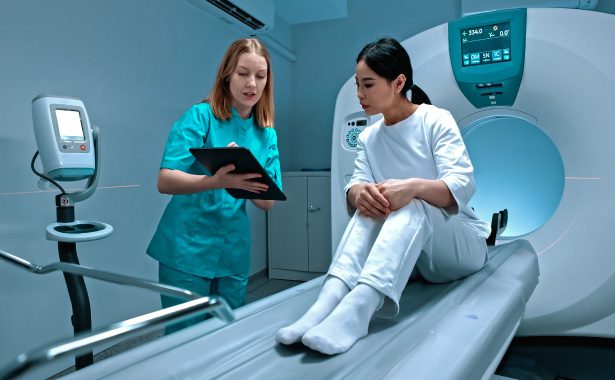AI and Radiology: Where are we today?
Artificial Intelligence is becoming the best ally of radiologists

The emergence of AI models as high-value tools for radiology is the result of substantial progress in several domains. Firstly, the availability and affordability of computing devices means that more efficient data processing mechanisms have been developed. Furthermore, the significant increase in the number of medical images and imaging data makes data sets more widely available, and this allows for the development of more accurate algorithms, and the training and improvement of deep learning models.
Given all this, we can affirm that AI is already present in all phases of medical imaging processes, regardless of the modality or specialty, whether in diagnostic imaging, interventional radiology or radiomics.
But how do AI tools play their role in diagnostic imaging?
From data acquisition to image reconstruction and analysis or report generation, AI can help radiologists in many ways. The workload of the average radiologist has been steadily increasing over the past few years: some reports indicate that the average radiologist interpreting CT scans must evaluate an image every 3-4 seconds during an 8-hour workday. This pressure can inevitably lead to errors that AI has the potential to reduce.
AI helps improve workflows and automate tasks. This avoids having to “judge” multiple systems and minimizes repetitive tasks that do not add value. But AI has also proven its worth in high-pressure environments, such as emergency departments, thanks to its interpretive capabilities (in particular, the ability to recognize findings) and non-interpretive capabilities, such as task prioritization. AI can even help write reports: a recent study evaluated ChatGPT’s writing capabilities and found them to be satisfactory. Other AI applications include generative adversarial networks, variational autoencoders and autoencoders, which can each contribute in their own way to improving diagnostic and decision-making processes, by removing noise and segmenting images, learning to understand images and detect anomalies, or creating realistic images for training or research purposes.

With all this, we can return to the statement with which we began this article: AI is becoming the radiologist’s new great ally.
Well, within this evolutionary context of healthcare, at Dedalus we envision a very near future in which Artificial Intelligence, driven by the latest digital health technologies, will have revolutionized radiology and taken the capabilities of healthcare professionals to the next level. We firmly believe that AI technology is here and now to empower our radiologists, supporting them in their daily routine, making their lives easier.
This, together with our approach focused on the entire health value chain, underlines everything we do because we know that by prioritizing digital innovation to ensure continuity of care, we can improve the quality of patient care.